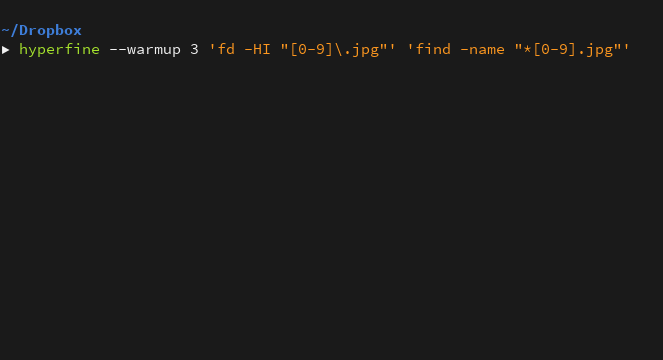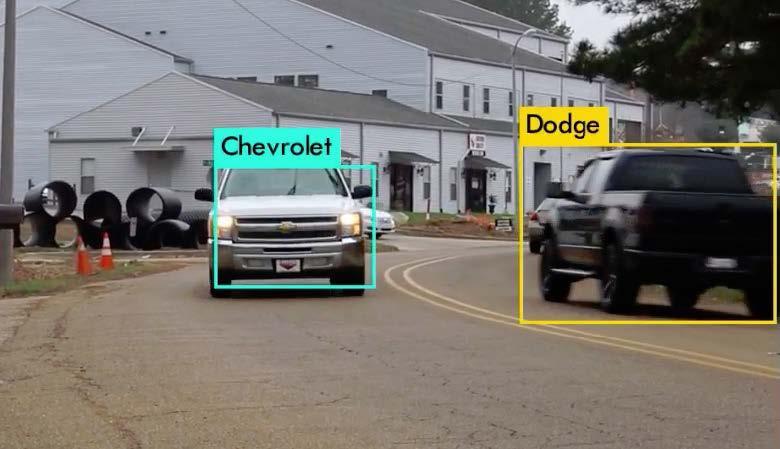每天推荐一个 GitHub 优质开源项目和一篇精选英文科技或编程文章原文,欢迎关注开源日报。交流QQ群:202790710;电报群 https://t.me/OpeningSourceOrg

今日推荐开源项目:《命令行性能调优工具——Hyperfine》GitHub地址
推荐理由:这是一个命令行的性能调优工具(benchmarking tool),好用又酷到爆
演示:基准测试fd和find:

特性:
- 跨多个运行统计分析
- 支持任意的 shell 命令
- 不断的反馈 benchmark 的进展和 current estimates
- 在 benchmarking 前可以进行 wormup run
- 在每一次测试前都可以设置缓存清理命令
使用:
可以简单的调用hyperfine <command>…参数可以是任何 shell命令。 例如:
hyperfine ‘sleep 0.3’
默认情况下, 它将执行至少10基准测试运行。也可以使用-m/–min-runs选择:
hyperfine –min-runs 5 ‘sleep 0.2’ ‘sleep 3.2’
当然也可以进行I/O-heavy测试,这里就不赘述了
今日推荐英文原文:《A look at open source image recognition technology》作者:Ben Cotton
原文链接:https://opensource.com/article/18/5/state-of-image-recognition
推荐理由:图像识别也是很多同学关心的领域,那么开源图像识别技术的领域状况如何呢?请看看《开源图像识别技术一览》
A look at open source image recognition technology
At the Supercomputing Conference in Denver last year, I discovered an interesting project as I walked the expo floor. A PhD student from Louisiana State University, Shayan Shams, had set up a large monitor displaying a webcam image. Overlaid on the image were colored boxes with labels. As I looked closer, I realized the labels identified objects on a table.
Of course, I had to play with it. As I moved each object on the table, its label followed. I moved some objects that were off-camera into the field of view, and the system identified them too.
When I asked Shams about the project, I was surprised to learn that he did not need to write any code to create it—the entire thing came together from open software and data. Shams used the Common Objects in Context (COCO) dataset for object recognition, reducing unnecessary classes to enable it to run on less powerful hardware. "Detecting some classes, such as airplane, car, bus, truck, and so on in the SC exhibition hall [was] not necessary," he explained. To do the actual detection, Shams used the You Only Look Once (YOLO) real-time object detection system.
The hardware was the only part of the setup that wasn't open. Shams used an NVIDIA Jetson TX2 module to run the detection. The TX2 is designed to act as an edge device for AI inference (as opposed to the more computationally intensive AI training). This $300 device allows live video analysis to happen away from central computing resources, which is key to applications like self-driving cars and other scenarios where network latency or bandwidth constraints require compute at the edge.
While this setup makes an interesting demonstration of the capabilities of live image recognition, Shams' efforts go far beyond simply identifying pens and coffee mugs. Working under LSU professor Seung-Jong Park, Shams is applying his research to the field of biomedical imaging. In one project, he applied deep learning to mammography: By analyzing mammogram images, medical professionals can reduce the number of unnecessary biopsies they perform. This not only lowers medical costs, but it saves patients stress.
Shams is also working on LSU's SmartCity project, which analyzes real-time data from traffic cameras in Baton Rouge to help detect criminal activities such as robbery and drunk driving. To address ethical considerations, Shams explained that all videos are discarded except those in which abnormal or criminal activity is detected. For these, the video for the specific vehicle or person is time-stamped, encrypted, and saved in a database. Any video the model flags as suspicious is reviewed by two on-site system administrators before being sent to the officials for further investigation.

In the meantime, if you're interested in experimenting with image-recognition technology, a Raspberry Pi with a webcam is sufficient hardware (although the recognition may not be immediate). The COCO dataset and the YOLO model are freely available. With autonomous vehicles and robots on the horizon, experience with live image recognition will be a valuable skill.
每天推荐一个 GitHub 优质开源项目和一篇精选英文科技或编程文章原文,欢迎关注开源日报。交流QQ群:202790710;电报群 https://t.me/OpeningSourceOrg
